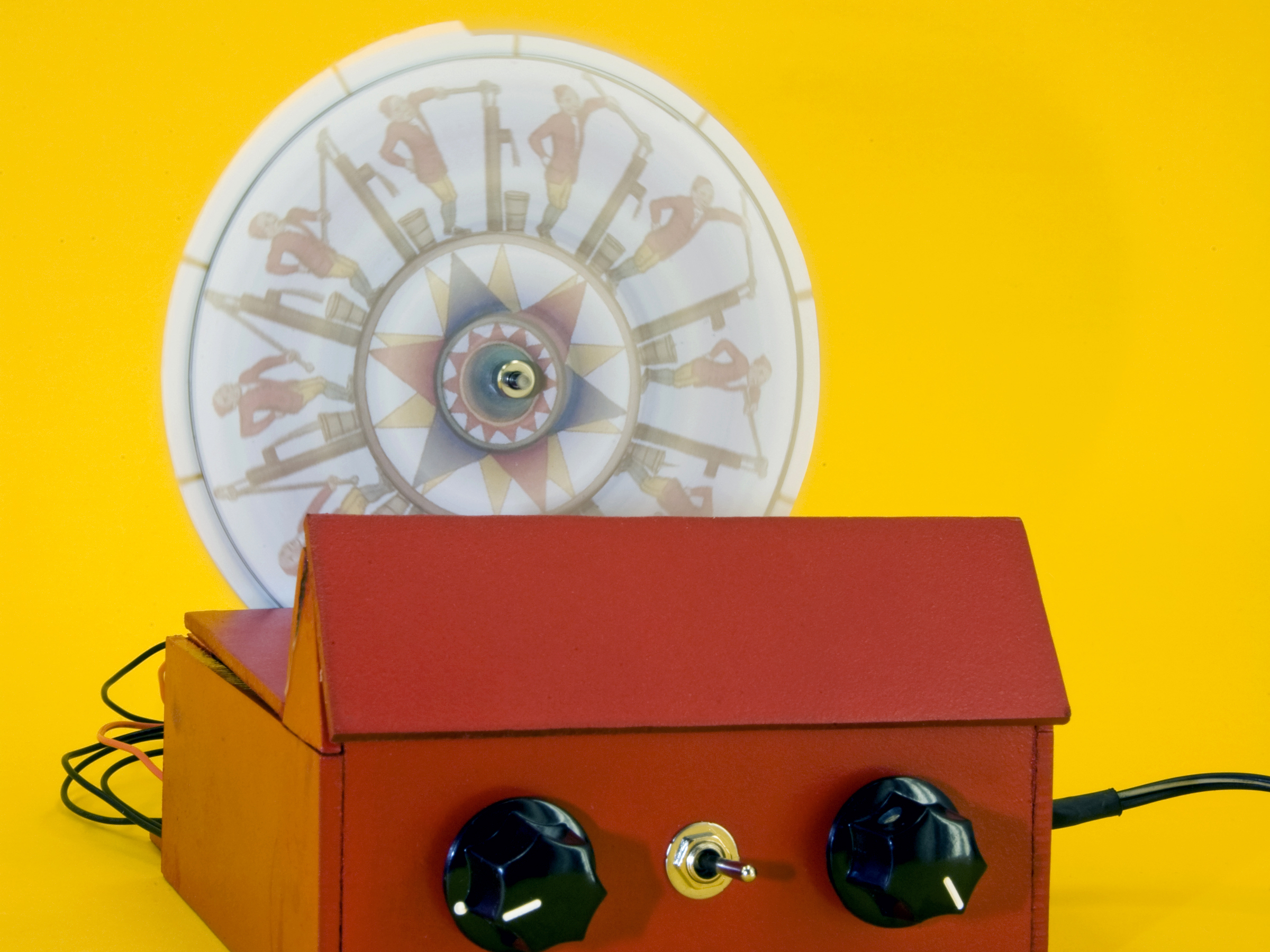Motorize a phenakistoscope, a 19th-century parlor novelty that preceded motion pictures, and keep its frames synched to an LED strobe by using a sensor and an Arduino microcontroller.
Invented in 1832 by Joseph Plateau, this device creates a moving picture from a sequence of stills arranged on a spinning disk and viewed through strategically cut slits. It’s easy to see how this invention and others like it evolved into movies and television.
My 9-year-old daughter and I wanted to make something new with Lego Mindstorms. We had a strobe, and we thought of combining it with a spinning disk to create animation. But it was difficult attaching the disk to the Lego motor, and we couldn’t control the motor and strobe speeds precisely enough to get them to match. The project really came together once we started using a gearmotor to give the disk a smooth, finely controllable rotation speed.
With an adjustable-frequency strobe, we experimented with persistence of vision and sympathetic frequencies, and produced several interesting visual effects. Finally, using an Arduino, a simple C program, and a sensor, we automatically synchronized the strobe with the rotating disk. A switch toggles between manual and microcontroller strobe control.


